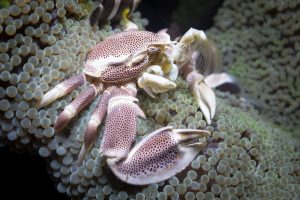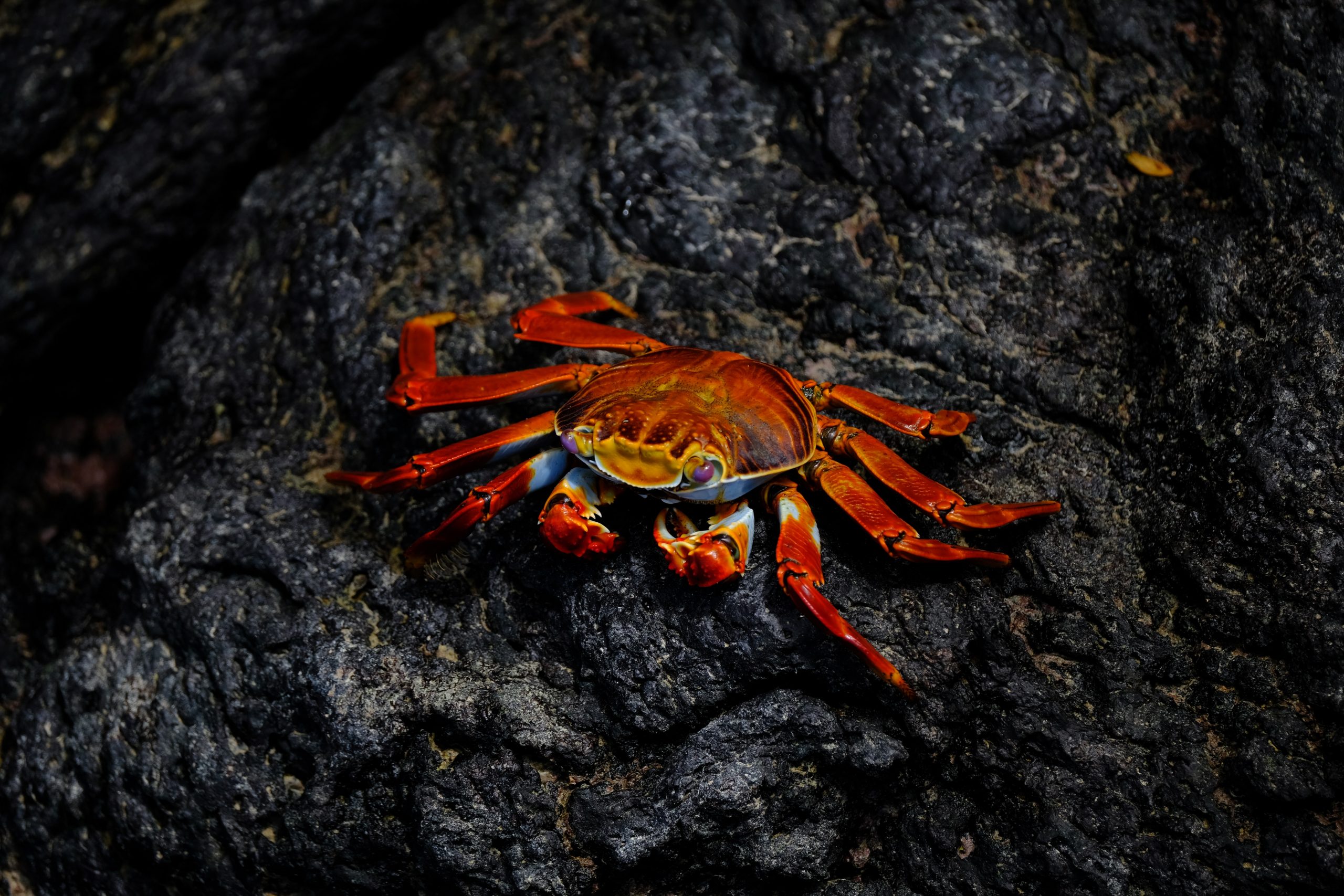What if I tell you, all the animals on earth are becoming crabs! It sounds crazy enough but it has happened in history. To elaborate, through the evolutionary timeline, ancient crustaceans have evolved into crab-like forms not only once but in five completely different contexts. Not only did the crab-like habitus evolve in the ‘true’ crabs or Brachyurans, but it also evolved three times independently within Anomurans. Which is the sister clade of the Brachyurans. This evolution of non-crab-like forms to crab-like habitus is scientifically known as “Carcination”. In a simpler, more humoresque way, we call it the “Crabification”.
Carcination is a direct result of convergent evolution. A mechanism of evolution, a little different than the fundamentals we know about evolution.
Convergent Evolution
The phylogenetic approach of evolutionary biology which groups organisms into clades hinges on one central concept – homology. Homology – literally meaning “same source” – occurs when traits are similar because of common ancestry. In contrast, Homoplasy – meaning “same form” – occurs when traits are similar for reasons other than common ancestry. A common cause for homoplasy is convergent evolution.
Convergent evolution, in a nutshell, is the independent evolution of similar features in different lineages. This type of evolution occurs when natural selection favors similar solutions to the problems posed by a similar way of making a living in different species. The similar characters developed among different species following convergent evolution are referred to as “Analogous features” rather than “Homologous” which is termed in a common ancestry.

Consider eutherian and marsupial mammals. Eutherians are placental mammals with a worldwide distribution. Marsupials are mammals who complete their development in the pouch of their mother. They are limited to the Australian continent. Some of the eutherian and marsupial species strongly resemble each other externally. For example, the sugar glider is an Australian marsupial squirrel with superficial adaptations very similar to flying squirrels in North America. Tasmanian Devil or thylacine, an extinct marsupial, strongly resemble eutherian common wild dogs.
Carcination

English zoologist Lancelot Alexander Borradaile (1916) first coined the term carcination. He used it, not only to describe the evolution of the crab-like habitus in true crabs but also to refer to the repeated formation of a ‘general habit of body of a crab’ in the other evolutionary lineages like Anomura.
Studies about the evolutionary processes which led to a crab-like habitus can be traced as far back as the second half of the 19th century. Then, Crustaceans with a crab-like habitus were initially recognized as ‘crabs’ and taxonomically categorized accordingly. A more intensive examination of the origin of the crab-like habitus and related evolutionary processes began late 19th century.
Now, the question that arises is, “why the crab-like form?”.
Many evolutionary biologists have been trying to answer this question and it is still an ongoing field of research. The preliminary researches have focused on the external adaptations. However, the research conclusions provided that the external morphology alone isn’t impactful for the whole process of convergent evolution of a crab-like form. Nowadays, scientists are trying to coincide the internal physiology of crustaceans with the crab morphotype which may provide considerable advantages for a scenario of convergent evolution.

Why the Crab?
The main reasons for why the crab-like form has been favored above other forms are taken generally relative to the “Macruran” form. Which is the prawn-like form.
In the crab-like form, one of the most advantageous features that can be seen is the pleon or the abdomen in the ventral side of the body. Scientists explain this feature as an adaptation, as pleon folding is done to escape predators among macruran crustaceans and the crab form has a made-in folded pleon. Also, research studies suggest the ventral pleon contributes to greater mobility. Which in benthic habitats, increases their success against predation.
The flat body form of crabs also allows the organisms to burrow within crevices and hide among the rocks in the seafloor increasing their survival and success in the evolutionary race.
Even though these morphological characters seem to have increased the success of crab-like form, as said before, scientists doubt these successes against predation can alone lead to the convergent evolution of crab morphotype. Hence, they are trying to co-relate the internal physiology to the external morphology of the crab-like forms.

Connecting the Crab Morphotype and Physiology
According to their clades, scientists have studied the internal systems of crustaceans to see whether the crab-like form provides a significant advantage. They have focused on the endophragmal system, Cephalothoracic ganglion and pleonal ganglion of the ventral nerve cord, hemolymph vascular system, pleonal muscles, ovaries, and hepatopancreas of crab-like forms relative to the non-crab- like crustaceans for this study.
Therein, they have found out that the transformations in pleonal muscles, ventral nerve cord, and hemolymph vascular system can be assigned to – and are structurally dependent on – the structure of cephalothorax and pleon bought by the process of carcination. Further, they have found out that the endophragmal skeleton of the crab morphotype results in a shorter distance between the neuromeres and changes the course and common branches of the leg arteries.
Overall, the most distinct changes resulting from the evolution of a crab-like habitus affected the pleon and led to changes in the pleonal ganglia.
These changes in internal structure relative to the external morphology have been found in both Brachurans and Anumurans regarding the process of carcination. Therefore, the success of the crab-like form has been confirmed according to the relation between physiology and external morphology.
This whole context is only about the concept of convergent evolution leading to the repetition of the crab morphotype through the evolutionary timeline. There are thousands of other animal forms and various techniques of evolution yet to be interpreted. So, as children of science, we better keep our eyes and ears open for curiosities.
References :
- Campbell N. A., Urry L. A., Cain M. L., Wasserman S. A., Minorsky P. V., Reece J. B., 2017. Campbell Biology. 11th ed. New York: Pearson Education.
- Delbert, C., 2020. Animals Keep Evolving Into Crabs, Which Is Somewhat Disturbing. [Online]
Available at: https://www.popularmechanics.com/science/a34389129/crab-evolution-carcinization/
[Accessed 03 05 2021]. - Freeman S., Allison L., Michael B., Podgorski G., Quillin k., Monroe J., Taylor E., 2014. Biological Science. 5th ed. New York: Pearson Education.
- Keiler J, Wirkner C. S., Richter S., 2017. One hundred years of carcinization – the evolution of the crab-like habitus in Anomura (Arthropoda: Crustacea). Biological Journal of the Linnean Society, Volume 121, pp. 200-222.
Image Courtesy :
- Title Image: https://bit.ly/2R1I38H
- 1st content image: https://bit.ly/2RsRv50
- 2nd content image:https://bit.ly/2PX1wqF
- 3rd content image: https://bit.ly/3vNmGXv
- 4th content image: https://bit.ly/3tvlqXs

